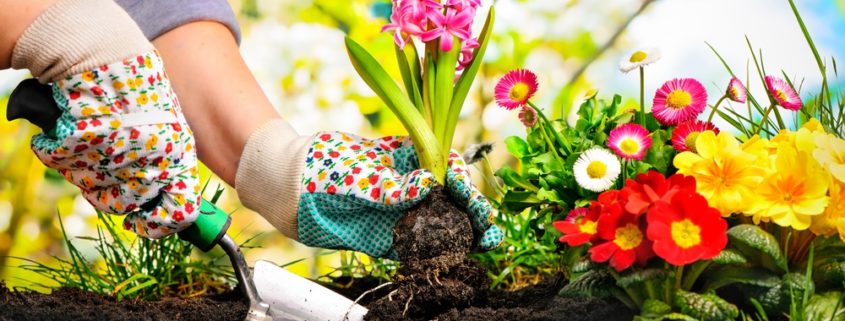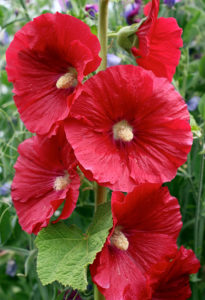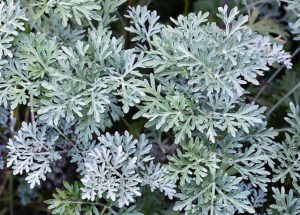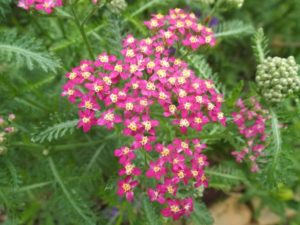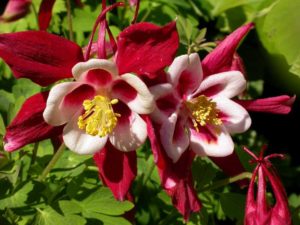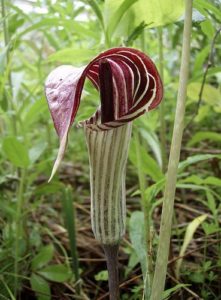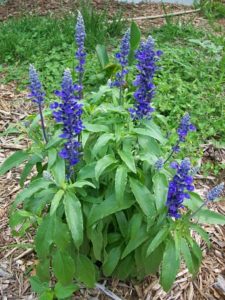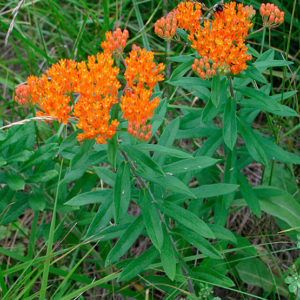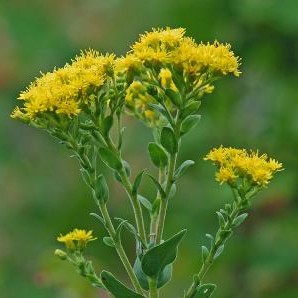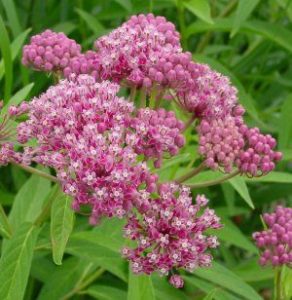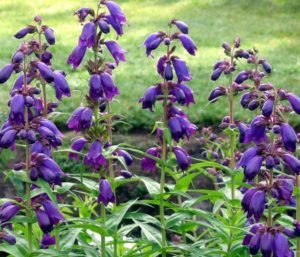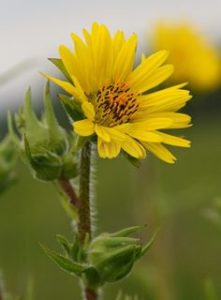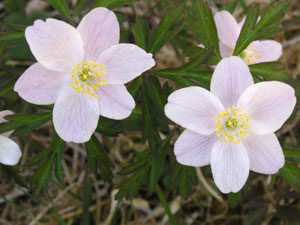Best 20 Perennials for Indianapolis
May 2018
One of the best and most colorful additions to any garden is a perennial. Perennials are plants that come back and bloom year after year. Purdue University Cooperative Extension Services calls perennials the backbone of any well-planned garden. It is a large category encompassing everything from hostas, to daylilies, to the simple daisy.
Perennials do require careful planning and knowledge of the plants’ unique characteristics but they offer year after year of beauty with a minimum of care. Purdue Cooperative Extension reminds us that you should not consider perennials as permanent plants as most will require periodic division to continue to thrive and bloom. And, of course, they require proper care to survive, like any other plant.
Purdue Cooperative Extension Services says that to have a successful perennial garden, you must engage in thorough planning and preparation. Here are some of the Services’ tips on how to get started:
• Before planting, prepare the soil thoroughly to provide good drainage, adequate fertilization, ample moisture and protection from drying winds.
• Purchase seeds or plants from reputable sources, preferably named and proven varieties.
• If you are starting from seed, either start the seed indoors or sow them in the area where the plants will be permanently located.
• Allow for the mature development of the plant. Don’t overcrowd the plants and don’t interplant with too many annuals which may offer competition.
• Perennial plants should be considered in your total landscape plan. Consider their height, flower color, season of bloom, and their growth habit, form and texture. They often can successfully be used in front of fences or larger shrubs.
When buying or ordering plants, you must consider both your climate and where you intend to plant. According to the USDA Plant Hardiness Zone map, Central Indiana is in Zone 6, so be sure to buy plants that are hardy enough to survive in the Zone 6 climate. Also you must take into consideration whether a plant needs full sun, shade or a combination when planning where in your yard you intend to plant them.
Once you have determined what perennials you want to include in your garden and you get them planted, here are some tips from gardeners.com for keeping them healthy:
• Keep newly transplanted perennials well-watered for the first few weeks. Water deeply to saturate the entire root ball and establish good contact between the roots and the surrounding soil.
• Most perennials prefer a pH of about 6.5, although, some prefer more alkaline or acidic soil. If you have trouble with a particular plant, check its pH requirements and the pH level of the soil in your flower garden.
• If your plants look stressed during the growing season, or if you see disease or insect damage, feed your plants with a quick-release organic fertilizer (try a blend of seaweed and fish emulsion).
• All plants die eventually, and some will die sooner than others, no matter what you do. If a plant performs poorly, try moving it to a different location. It may require removing it if it doesn’t thrive.
When designing a perennial garden, think about how you’ll get access to your plants to stake, deadhead, or divide them. Flat rocks can be used as stepping stones within the garden. A walkway created at the back of a border will be hidden during the growing season, but will make the bed accessible for spring and fall chores.
Here are Better Homes and Gardens 20 best perennials for a low maintenance garden that grows well in our Midwest climate:
Peony
Peonies are very tough, not to mention very beautiful. They are easy-maintenance garden plants that even when neglected exhibit gorgeous early-summer fragrant blooms and are great for cut-flower arrangements too. There are many peony varieties to choose from.
Plant Name: Paeonia officinalis
Growing Conditions: Full sun and well-drained soil
Size: To 4 feet tall and wide
Zones: 3-8
It’s actually a biennial or short-lived perennial, however, hollyhock reseeds itself, so you should always have a crop of them and they, too are very low maintenance.
Plant Name: Alcea rosea
Growing Conditions: Full sun or part shade and moist, well-drained soil
Size: To 6 feet tall and 2 feet wide
Grow It With: Peony, which blooms earlier in the season.
Zones: 3-9
Perennials with great-looking foliage can be just as desirable as those with pretty blooms. Artemisia is a good example. It’s a low-maintenance garden perennial that offers silvery foliage that pairs well with flowers of every color.
Plant Name: Artemisia selections
Growing Conditions: Full sun and well-drained soil
Size: To 5 feet tall and 3 feet wide
Grow It With: Delphinium, which creates a contrast with its upright, spiky appearance.
Zones: 3-8
Hosta
Hostas are the ultimate shade-garden plants because they’re so tough. These perennials also offer a huge range of colors and sizes; look for varieties that grow from 6 inches to 6 feet wide, and with leaves in shades of green, gold, or blue.
Plant Name: Hosta selections
Growing Conditions: Shade and moist, well-drained soil
Size: To 6 feet tall and wide, depending on type
Grow It With: Ferns; their fine-texture foliage makes the perfect contrast to any hosta variety.
Zones: 3-9
Daylily
Daylilies are about as easy as it gets when it comes to plant and stand back and watch it grow. While old-fashioned ditch lilies are fast-spreading and practically indestructible, newer varieties of daylilies spread more slowly. Many bloom on and off throughout the summer, so you can enjoy their colorful flowers all season.
Plant Name: Hemerocallis selections
Growing Conditions: Full sun and well-drained soil
Size: To 4 feet tall and 3 feet wide
Grow It With: Use a shrub, such as tough-as-nails ninebark, as a backdrop for daylilies.
Zones: 3-10
Perennial Hibiscus
The perennial Hibiscus is one of the boldest, yet easiest perennials in the garden. They offer flowers all summer long in shades of red, pink, and white. Individual blooms can be as large as 12 inches wide and they keep blooming through fall.
Plant Name: Hibiscus moscheutos
Growing Conditions: Full sun and moist soil
Size: To 8 feet tall and 4 feet wide
Grow It With: Spiderwort, which blooms before the late-waking hibiscus starts to grow.
Zones: 5-10
The yarrow plant has a lot going for it. It’s heat and drought tolerant, it’s usually ignored by deer and rabbits, and it’s a great cut flower. Plus, its summertime blooms appear in a rainbow of shades: yellow, white, pink, even terra-cotta.
Plant Name: Achillea millefolium
Growing Conditions: Full sun and well-drained soil
Size: To 3 feet tall and 2 feet wide
Grow It With: Late-blooming sedum picks up after the yarrow stops blooming, so it’s a great way to extend the season.
Zones: 3-8
Purple Coneflower
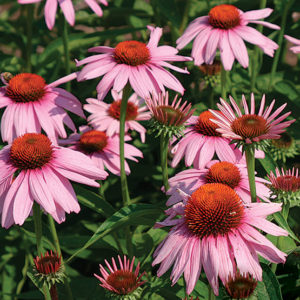 These perennials are both tough and lovely. Plant purple coneflower in virtually any sunny spot, and it will bloom all summer and into fall. Plus, the coneflower’s lavender, white, pink, yellow, orange, or green daisy-shape blooms fit any garden design.
These perennials are both tough and lovely. Plant purple coneflower in virtually any sunny spot, and it will bloom all summer and into fall. Plus, the coneflower’s lavender, white, pink, yellow, orange, or green daisy-shape blooms fit any garden design.
Plant Name: Echinacea purpurea
Growing Conditions: Full sun and well-drained soil
Size: To 4 feet tall and wide
Zones: 3-9
Asparagus
Asparagus gives you two reasons to love it. In spring, you can eat its tasty and nutritious stems. Then in summer, it leafs out to become a big, fine-texture plant that’s a beautiful backdrop for any perennials you grow with it.
Plant Name: Asparagus officinalis
Growing Conditions: Full sun or part shade and moist, well-drained soil
Size: To 4 feet tall and wide
Grow It With: Purple coneflower, which blooms constantly through the summer and into the fall.
Zones: 4-8
These next 10 plants are native to the Midwest and so are pre-disposed to doing well here:
Columbine is a very adaptable plant that does well in sun or shade. The native columbine has red and yellow-spurred flowers that both butterflies and hummingbirds love.
Name: Aquilegia canadensis
Growing Conditions: Sun or shade and well-drained soil
Size: To 2 feet tall
Zones: 3-8
This one is great in a shade garden. Its hooded, green flowers arise to reveal little Jack poking out against rusty red markings on the inside of the “pulpit.” Sometimes the flowers will develop bright red clusters of berries in the fall which give an added season of interest.
Name: Arisaema triphyllum
Growing Conditions: Shade and moist, well-drained soil
Size: To 2 feet tall
Zones: 4-9
In early fall, sections of the prairies become the color of sky-blue thanks to the lovely flowers of blue sage. It’s an easy perennial for your garden and gives off beautiful color.
Name: Salvia pitcheri
Growing Conditions: Full sun and well-drained soil
Size: To 4 feet tall
Zones: 4-9
Spiderworts are pretty and very versatile spring-blooming perennials with grassy foliage and three-petaled flowers.
Name: Tradescantia sp.
Growing Conditions: Sun or shade and moist, well-drained soil
Size: To 3 feet tall
Zones: 4-9
This is a prairie plant with a lot to offer: It’s pest, disease, and drought resistant. Plus, it attracts butterflies (including monarchs, whose caterpillars will eat the leaves). It’s orange color will light up any summer garden.
Name: Asclepias tuberosa
Growing Conditions: Full sun, well-drained soil
Size: To 4 feet tall
Zones: 4-10
A spectacular native perennial in the fall garden, goldenrod bears fluffy clusters of golden-yellow blooms. Better Homes and Gardens mentions ‘Fireworks’, so named because of the shape of the bloom clusters, as a favorite.
Name: Solidago sp.
Growing Conditions: Full sun and well-drained soil
Size: To 4 feet tall, depending on variety
Zones: 4-8
You’ll find lots of butterflies flitting around Milkweeds including this one. Swamp milkweed is good in average garden conditions. Showy pink flowers appear in mid-summer and attract monarch butterflies.
Name: Asclepias incarnate
Growing Conditions: Full sun, moist to average soils
Size: To 5 feet tall
Zones: 3-6
A superb perennial, this penstemon bursts with gorgeous burgundy-colored foliage and clusters of white flowers in early summer.
Name: Penstemon digitalis ‘Husker Red’
Growing Conditions: Full sun and moist, well-drained soil
Size: To 2 feet tall. Zones: 3-8
Compass plant provides a rather dramatic presence in the summer garden. Yellow, sunflower-shaped blooms sit atop towering, 9-foot stems. It is a very drought-tolerant plant and earns its name because it aligns itself north to south to conserve water on hot summer days.
Name: Silphium laciniatum
Growing Conditions: Full sun, well-drained soil
Size: To 9 feet tall
Zones: 3-8
Little Bluestem
Better Homes and Gardens calls Little Bluestem one of its all-time favorite grasses. That’s because of its bronze-kissed, blue-gray foliage that is evident through spring and summer. Then in fall, the blades turn a stunning shade of purple-bronze and continue to look good all winter.
Name: Schizachyrium scoparium
Growing Conditions: Full sun, well-drained soil
Size: To 3 feet tall
Zones: 3-9
Anemone is an easy-to-grow plant that thrives in moist soils rich in organic matter. Its large white flowers are a highlight of the spring border. It is actually a groundcover and grows rapidly filling in a large space within a growing season.
Name: Anemone canadensis
Growing Conditions: Part sun to shade, well-drained soil
Size: To 2 feet tall
Zones: 3-9
The Indiana Native Plant and Wildflower Society (INPAWS) highly recommends plants that are native to Indiana as some of the best choices for your garden. They are available at many garden centers and often have the “Grow Indiana Natives” logo on them. INPAWS says these will grow without a lot of work if you plant them where their basic light and moisture requirements are met. You’ll find INPAWS-certified native plant sources at growindiananatives.org
The mission of INPAWS is to help Indiana appreciate, preserve, use, and study its native trees, shrubs, and wildflowers, and to teach people about their beauty, diversity, and importance to our environment.
Michael Homoya, a state Botanist/Plant Ecologist with the Indiana Department of Natural Resources says “Indigenous plants are a significant part of a region’s geographic context—in fact, they help define it. They have proven themselves capable of surviving in a landscape for millennia.”
Purdue University Cooperative Extension Service, Department of Horticulture offers an exhaustive list of recommended perennials for Indiana, their descriptions and care at: https://ag.purdue.edu/hla/pubs/HO/HO-79.pdf
Gardens add beauty and value to your home and perennials are the most important part of any garden. Plant them once and they will bring you years of enjoyment!

